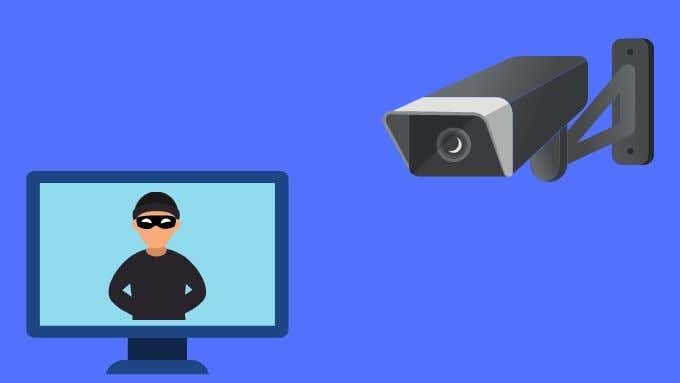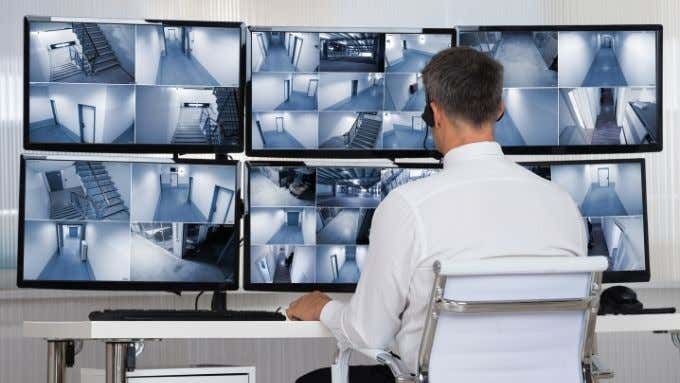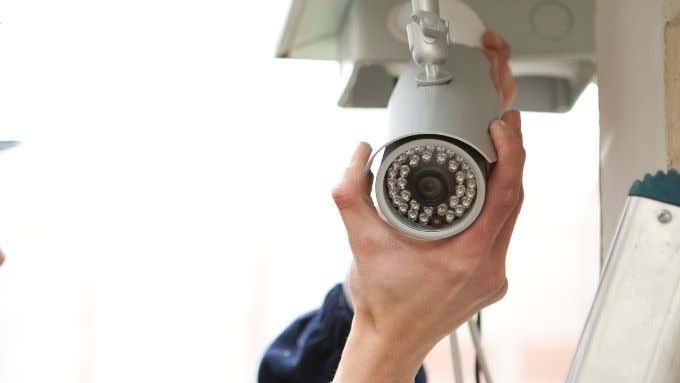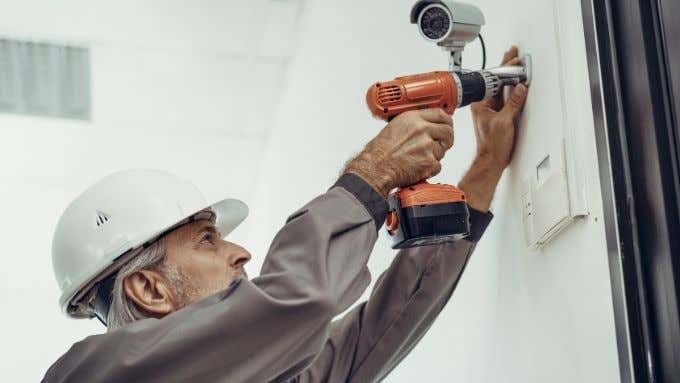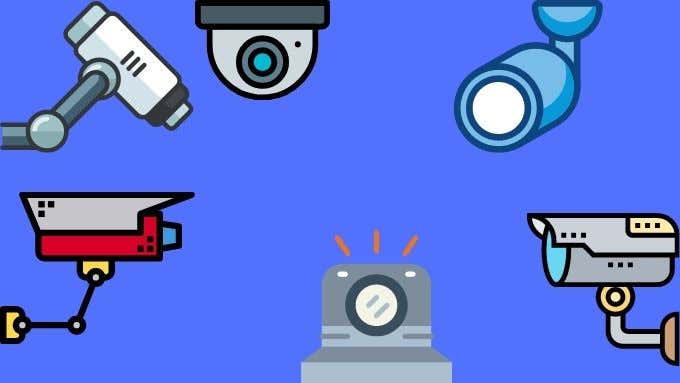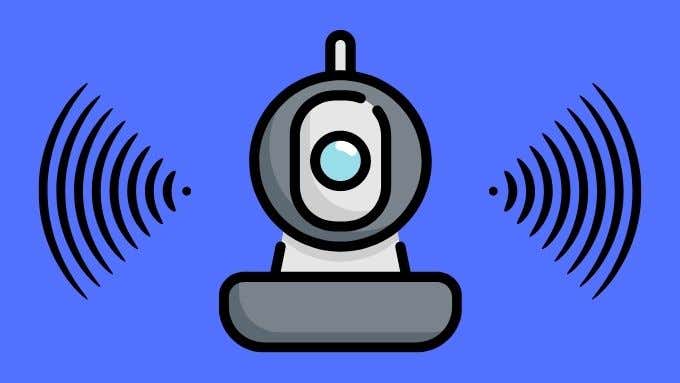Getting started with a wired security camera system can seem daunting, but once you know how wired security camera systems work, it will all make perfect sense.
The Two Types of Wired Security Camera Systems
The first order of business is to cover the two main types of wires security camera systems. The traditional wired camera system uses analogue coaxial cables and offers a relatively lower quality image. More modern systems use cameras that transmit data digitally over Ethernet cabling. Both types of camera receive power over their respective cable types, so you don’t need to worry about providing power at the point of installation.
Typical Components in a Wired Security Camera System
Whichever type of wired security camera system you choose, the basic components are the same:
The actual cameras and their mountings.The cables that run from the individual cameras.A hub device that connects all the cameras.A recording system, often integrated into the hub device.A hard drive to store recordings.A monitor to view the live feed from the camera system.Sometimes, a computer to manage and control the system is required.
While most wired camera security systems have these components, the individual capabilities of each component can vary significantly. For example, the hub device might have the ability to connect to the internet or it may just be a simple video switcher.
A Closer Look at Wired Cameras
The cameras themselves can vary. Most wired security camera starter kits will give you a few identical cameras, but it’s important to match the different types of camera to the environments they’ll be expected to operate in. For example, if you’re going to use a camera outdoors, you should certainly look for a model that’s been designed to work in rain, sleet, snow and other environmental hazards. The same goes for low light environments. In those cases you want cameras that can see well when there’s not much light. Some cameras are sold as having “night vision”, which usually means that they are sensitive to infrared light. Cameras can have different fields of view and focal lengths. So you also need to keep that in mind when choosing which cameras to use for your various surveillance spots.
Wired Security Camera Installation Overview
So what does it take to install a wired security camera system? It can be pretty complicated, but the basic work involved includes:
Mounting the cameras in their correct locations. Usually by drilling holes and then screwing the mount into place.Drilling holes through which to route cabling. This can be a challenge because you may have to drill through a wide variety of materials.Pulling and routing cable between the cameras and hub device.Attaching the connectors for each respective type of cable.Connecting the cameras to the hub device.Connecting the hub device to a monitor.Installing a hard drive in the hub device or attaching the video output to a computer with a capture card.
While mounting the cameras and setting up the video receiver hub, video recorder, computer and monitor are all relatively easy, it’s the cabling that offers a real challenge. Attaching the connectors at the ends of the routed cable can be particularly tricky. Coaxial cables aren’t that hard to connect, although you need to take care with insulation and waterproofing where appropriate. Ethernet cables require a special crimping tool and knowledge of what the correct wiring order is according to a wiring diagram. You can of course purchase lengths of cable with connectors already attached, but this can mean having excess cables or ones that are too short. If you pay to have cables made to length, make sure your measurements are accurate!
The Pros and Cons of Wired Cameras
The biggest con for a wired camera security system is undoubtedly how much of a pain it is to install it. Once you have it installed, you’ll find it’s the most reliable and foolproof solution. Since the cameras all draw power from the video receiver, it’s simple to keep the system running in the event of a power outage, especially a deliberate one. All you have to do is attach the main system to a suitable uninterruptible power supply. One disadvantage of using a wired camera system is that a nefarious criminal might simply cut the wire from a particular camera. This means that you really need to do a good job when routing cables, so that they aren’t obvious. They need to be installed in such a way that they are detection and tamper resistant. Especially when it comes to exterior cameras. Wired camera systems can also be a nuisance when something goes wrong with the cabling. If a mischievous rat decides to nibble through one of your cables, it can be hard to find the break or to access it for a repair. Finally, another large advantage of a wired system like this is that you can keep it completely off-grid if you like. Assuming that you don’t mind losing remote access to the feed. Which means you don’t have to worry about someone hacking into your cameras, which is a real concern with internet-connected camera devices.
The Pros and Cons of Wireless Cameras
The biggest advantage that wireless cameras have over wired systems is the ease of installation. As long as your camera is within WiFi range, all you have to do is make sure it has power. Which brings us to the first downside of a wireless camera: power. Each camera needs to be plugged into an outlet. Which means you either have to limit your camera placement to where power is available or do additional wiring, which rather defeats the point. Battery-powered wireless cameras are also an option, but as you can imagine this brings a new set of issues to the table. Another limitation of wireless cameras is that you can’t have too many of them running at the same time. Not only because of WiFi congestion, but because the apps that operate them generally only support around four cameras at the same time. That’s not a big deal for apartments or small homes, but anyone with bigger spaces to cover is out of luck. These cameras can also suffer from the same sorts of interference as any other WiFi device. Unless you connect them to a router that has no internet connection, they always have the risk of being hacked.
Who are Wired Systems For?
Wired camera systems are best for people with larger budgets. Especially budgets that include professional installation. If you want a solid surveillance system with many cameras, robust recording and the option to go off-grid, wired is the way to go. Wireless cameras are best for small dwellings where you want to spend as little as possible, have an easy installation process or perhaps in situations where you aren’t allowed to drill extensively. The choice is ultimately up to you!
